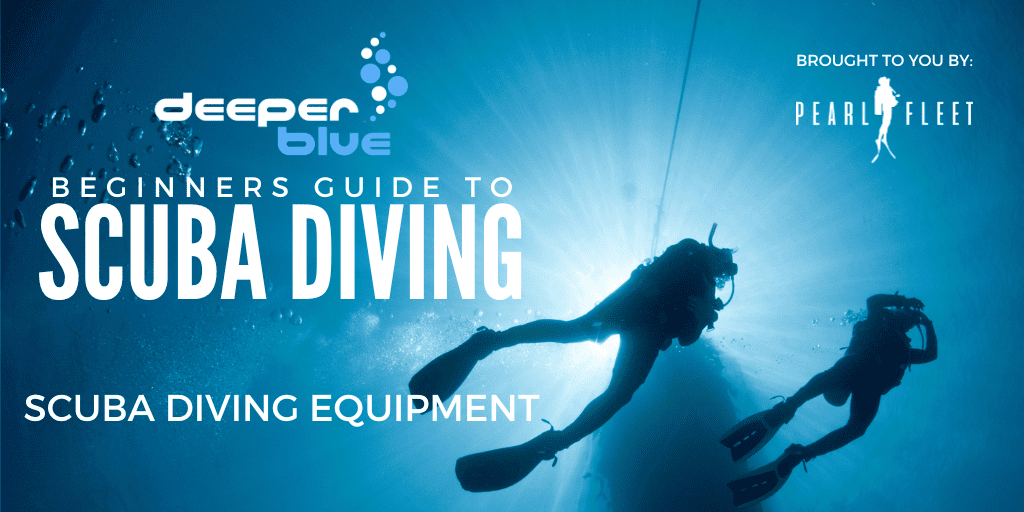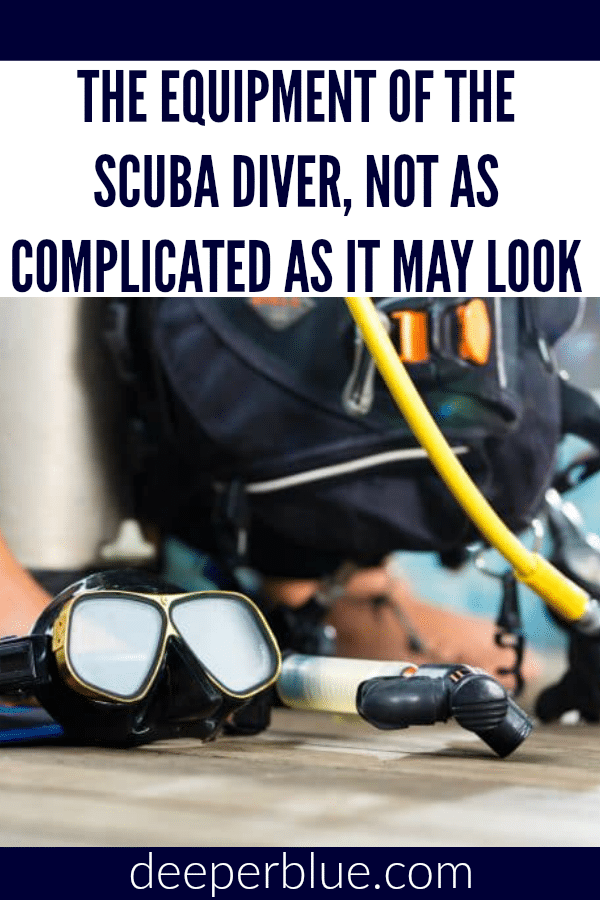This article is part of the Beginners Guide to Scuba Diving
The first time for anything can be overwhelming, that first day of High School, your first date, your first driving lesson, and, yes, your first diving lesson.
When you slipped behind the steering wheel of the car for the first time, you had years of experience observing other drivers as they used the different tools – accelerator pedal, brakes, steering wheels – that a driver uses. Knowing the basic function of those items made your first experience a little less stressful. Soon you no longer consciously think of them. When you see all the scuba gear that a diver wears to go underwater, it might make you reconsider diving. It shouldn’t, soon each item will be well known to you.
The first day of learning something can be easier with little advanced knowledge. To reduce some of the information overloads of the first day, we will introduce some of the equipment you will encounter so that you have less to absorb.
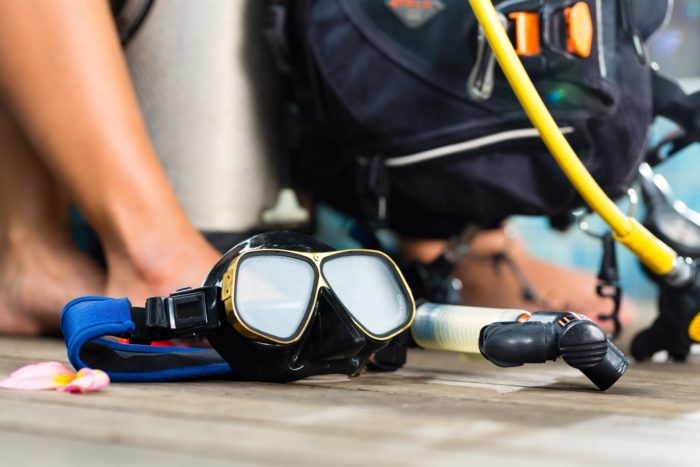
Basic Scuba Gear
Individuals thinking of becoming a diver are often put off because they believe it is too expensive. The price of full scuba gear can easily cost over a thousand dollars, even for just the basic equipment. Training for your initial certification generally includes the cost of rental scuba gear.
After you are certified, items of equipment can be rented. Using rental scuba gear does not mark you as a beginner. Many experienced divers, who do not dive frequently enough to make it economical, still will rent instead of buying. Airline luggage rules come into play as well, sometimes it is cheaper and more convenient to leave your gear at home and rent at the dive center.
Here are some of the essential items you will be introduced to during your training.
Dive Cylinder
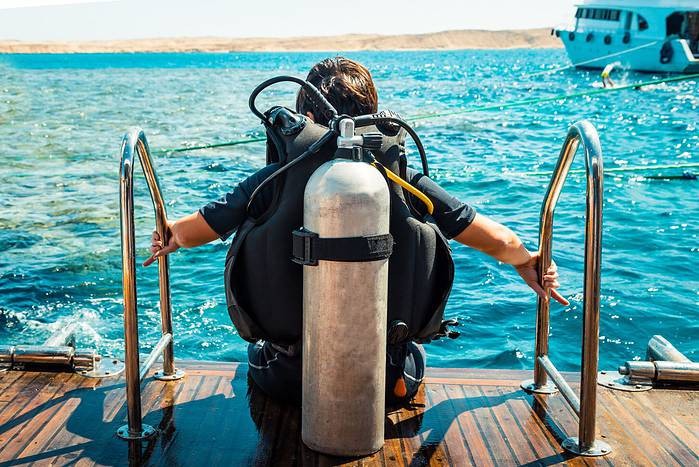
The diving cylinder, also called a Scuba tank, contains the compressed air you will use underwater. Unless it is painted green or white it is not an oxygen tank. Many people who are not divers will refer to scuba tanks as oxygen tanks but they are incorrect to do so. Breathing 100% oxygen at the surface does have its place for medical treatments and technical divers may use it in shallow water, but, beyond shallow depths, it becomes a toxin.
The standard fill of dive cylinders is the same as your breathing naturally, 21% oxygen. Dive tanks come in a few different sizes and are made of either aluminum or steel. The 80cf aluminum is the one most commonly used in training and as rentals. As you begin your training just log the tank size and type you use so that the information is available later. Few divers purchase their own tanks, as it is easier to just rent filled ones.
Weights
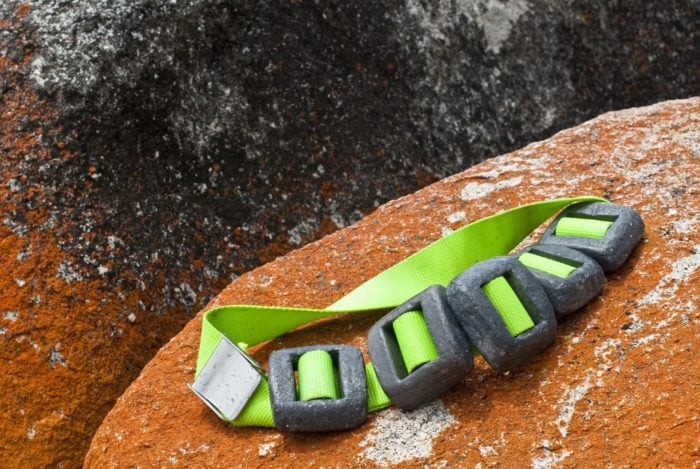
Most people will be shocked to hear you add weights when scuba diving. Flashbacks to b-rated movies where gangsters place weights around the bodies they want to get rid of. The purpose of the weights is to help you be neutral balance during and importantly at the end of your dive. While it may not look like it, a diver with a wetsuit and scuba gear would float without the extra weight.
Also, the tank holds air that will be used. That air will weigh between 4 to 7 pounds and you need weights to compensate for the extra buoyancy. Weights are generally included with a dive or tank rental.
BCD
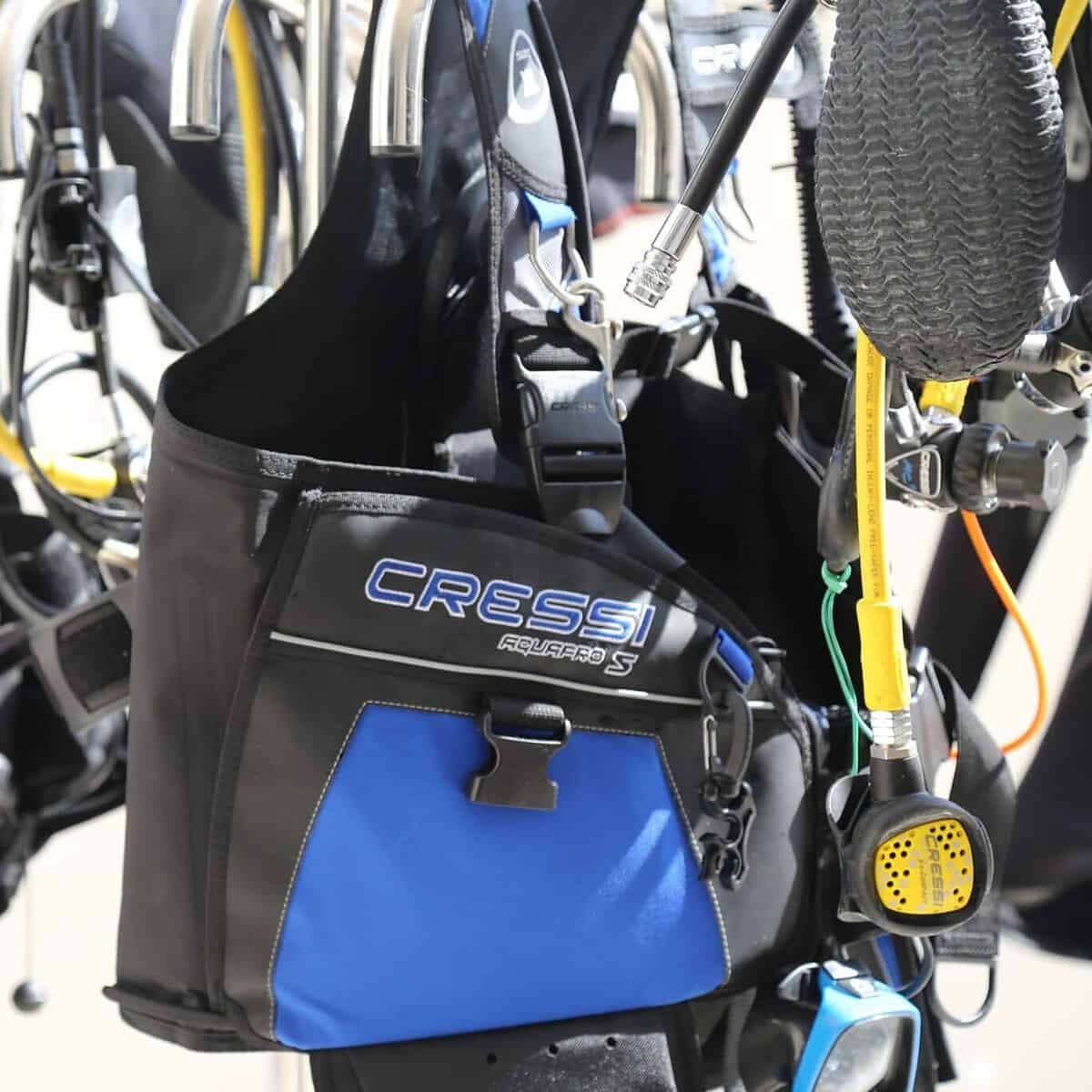
The buoyancy control device called BCD or BC is one of the more important inventions that make scuba diving a fun sport. While there are different designs, this vest-type device attaches the dive gear to you and helps maintain neutral buoyancy.
The BCD contains a backboard and straps that support and attaches the dive cylinder. The first stage regulator attaches to the cylinder and a hose from it attaches to your BCD. This is a low-pressure hose and the connection is to the BCD’s air bladder.
An inflator button allows air from the cylinder to enter the BCD and add buoyancy. A dump valve allows a diver to release air from the BCD becoming less buoyant. The closer you are able to maintain neutral buoyancy, the better your dive and the safer.
Many, if not most, diving injuries occur when divers return to the surface too fast. Many times that happens when a dive becomes too buoyant. A BCD often has a few pockets to store some small things and places to clip on other items that are used on a dive. This frees the hands for other tasks.
Regulator
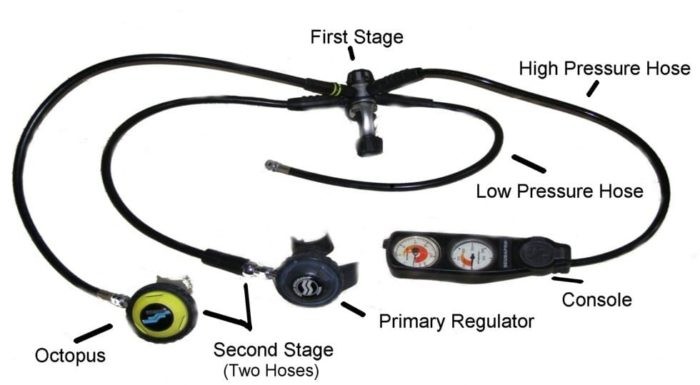
Jacques-Yves Cousteau and Émile Gagnan invented the “aqua-lung” in 1943. The Aqua-lung was the first major step into what we now call scuba diving, in fact for decades the equipment for diving was called an aqua-lung.
The real invention was the demand regulator that delivers air to the diver that has been reduced from the high pressure of the tank to ambient pressure. Their designs have been proven reliable and while there have been improvements on the original the basic design is still valid. What we normally call a regulator, is a first-stage regulator with hoses connected to two-second stage regulators.
It will also have a high-pressure hose that is connected to a submersible pressure gauge (SPG) and a low-pressure hose to connect to the BCD. The hose for the BCD has a quick disconnect.
The second stage regulators are what deliver the air to your mouth. In an oversimplified explanation, it is all about balancing pressures. You have the pressure of the water around you acting on a diaphragm inside the regulator. The opposite side of that is the air in your mouth that is normally an equal pressure. When you exhale, the air is forced out of the regulator by way of the exhaust port. When you inhale there is less pressure on “your” side of the diaphragm, this opens a valve letting in air from the hose attached to the first stage. Another important point, if the mouthpiece has been out of your mouth you need to clear it before inhaling.
The sharp exhale will do that, however, if you do not have any air in your lungs there is a purge valve that will do the same. Press it and you are ready. If you are getting air from a hanging safety tank, check that the tank valve is open and purge the regulator. It is not uncommon for small fish to claim the mouthpiece as their new apartment. You will have two second-stage regulators, a primary and secondary. They operate the same but may look different.
The secondary is to be used as a backup, either to replace the primary in case it fails or to share with a buddy if they are low on air. The secondary is called the octopus and is often yellow-colored so they are easy to see.
Mask
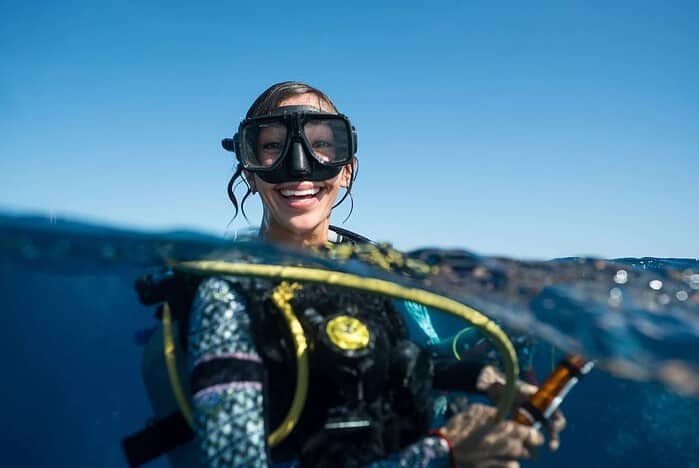
The mask creates an air pocket in front of your eyes, that allows the eyes to focus. While the common thought is it is just a mask to get something, it is not always as simple as that. There is also a common myth that a snorkeling mask is not suited for diving. While that may have been the rule a few decades ago, it is not always as clear as it once was.
Consumer demand has made many a manufacturer improve their quality and many are on the same level as diving. There are some features required for a dive mask. The amount of space within the mask called volume is important for a diving mask. A large volume will be more difficult to clear.
Snorkelers are tied to the surface and must return to the surface to clear a mask, so the volume is not as important in a snorkel mask. The parts of a dive mask are the lens, the skirt, a nose pocket, and a head strap. A design maybe with a frame or frame-less. The diving mask uses tempered glass that is designed to withstand impact plus able to stand up to high pressure.
Most dive masks have a lens in the 80 to 90% transmission range while a high-quality lens may reach 95%. The word tempered will appear on the glass. Dive mask uses a high-quality silicon generally medical grade for the skirts. This grade of silicon is more pliable, giving a more flexible edge that fits closer leading to a better seal. The skirt has a double edge to provide two layers of sealing. Built into the skirt is a nose pocket. This allows the mask to fully cover the nose. This is necessary to add air to a mask to equalize the pressure in the mask as well as provide a means to clear a mask.
The nose pocket must be in the skirt so that the diver can hold his nose closed to equalize pressure in the ears. The strap is the same material as the skirt, however, some divers will replace it with a neoprene. One point about the strap is that it should not be pulled too tight. Doing so will cause the skirt to buckle and allow leakage. The strap is mostly just holding the mask in position
Fins
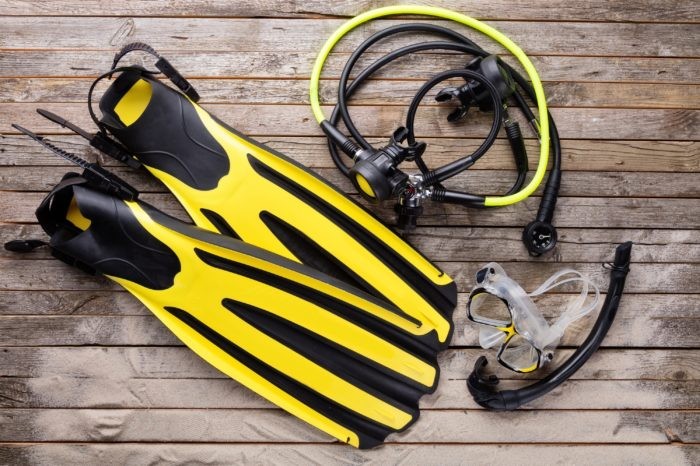
In scuba diving, the legs provide all the power for propulsion. Fins provide additional surface area to work with the water to move you. The fins have two parts, the pocket, and the blade. The pocket has two styles, open heel, and full foot. The open heel has a strap that is adjustable and with this style, you wear a boot.
These are the most common style used as they can be used in any dive location. Since the strap is adjustable, they come in limited sizes. The full-foot design is like putting on a slipper. You are not able to wear boots with these as they are sized to shoe sizes. This means they cannot be used in colder waters where thermal protection is needed. The full foot is common in snorkeling equipment.
Snorkels
The value of a snorkel varies depending on where you dive. Most divers will just use a simple model.
Wetsuits, Drysuit and dive skins
Water temperatures are almost always below body temperature which means the body will cool. Exposure suits are used to slow the loss. Wetsuits are normally used in tropical waters while cold water diving will require a drysuit. Wet suits are available in different thicknesses providing different levels of protection. They also add positive buoyancy. A dive skin does not have any thermal protection but helps protect the body from stings and coral scrapes.
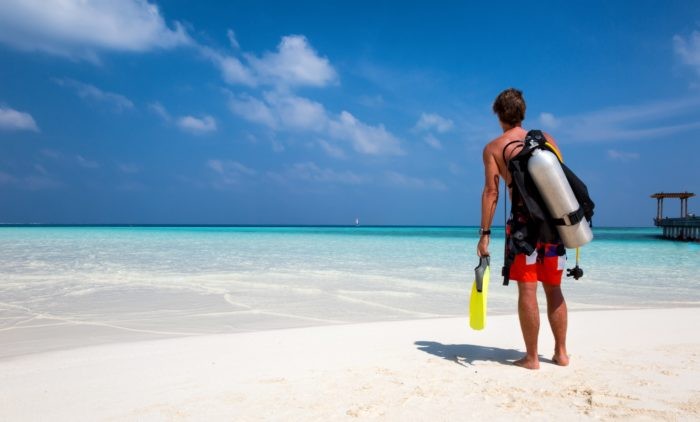
Before Long, Your Scuba Kit Will Feel As Comfortable As Your Favorite Pair of Jeans
As you start your first confined water training, the equipment may feel alien to you, that’s all right. During the first few practice sessions, you might feel all thumbs, that will shortly pass. Many of the skills that you learn and practice in your confined water are about learning to properly use this equipment, and how to react if there is a problem.
Before you complete your certification, you will be comfortable using these items. Looking back at your first day of training, you might scratch your head and think, “What was I nervous about?”. Before long, you will be looking forward to putting on your gear as you prepare for that next great dive.
Click here for more articles in the Beginners Guide to Scuba Diving
Brought To You By
Our Beginners Guide to Scuba Diving is brought to you by Pearl Fleet. Pearl Fleet invites you to embark on their exquisitely crafted yachts for the finest diving experience the world has to offer. From purposefully designed diving itineraries to high-class amenities, Pearl Fleet’s immersive getaways allow you to indulge in your passion as you journey to world-class diving destinations. You can find out more at pearlfleet.org.

